Almost all of my time in Russia I spent at or close to Lake Baikal. I arrived in Irkutsk and had a couple of days to spend there, before I started to work in a volunteering project with Great Baikal Trail for two weeks.
Lake Baikal is a pretty special and really interesting lake. It is the biggest Lake in the world – biggest meaning that there is no other lake in the world with so much water. There are other lakes that have a larger surface area, but Baikal has a lot more water than any other lake because it is so deep. Its deepest part is more than 1600 meters below the surface. It contains 20% of the world’s freshwater and more water than all Great Lakes in North America combined.
The lake is also among the worlds clearest. This is mostly caused by the fact that, unlike most other big lakes in the world, there is very little human activity at its shore, no big cities and not a lot of industry, and there are hardly any ships going on the lake. The biggest city Irkutsk is 70 km away, and the Angara river, at which Irkutsk lies, actually flows out of the lake instead of into it, so it doesn’t transport any waste into Baikal. The lake’s water is so clear that you can drink it at most places, which I did a lot and can say that it tastes really good. I think I never before swam in a lake and just opened my mouth to drink the water in which I was swimming.
The fact that the lake’s shore is in most places so remote and untouched by human activity also makes it a real nature paradise. There are really different kinds of landscapes around it, from the dry, almost desert-like Olkhon Island to the the very wet mountain areas like Khamar-Daban at the southern shore. In recent years tourism around the lake has developed a bit, but it is still far from mass tourism like in many other places.
Great Baikal Trail
The area is also suited perfectly for hiking, camping and trekking activities, and this is where the Great Baikal Trail comes into the whole picture. Great Baikal Trail (GBT) is an organisation that wants to develop sustainable tourism around the lake, and its main goal is to establish hiking trails in the Baikal area. Since in Russia ecotourism (and hiking in general) is not yet a big thing and there is not a lot of funding for such projects, the main activities of GBT are volunteering projects, where anyone can come to Baikal to participate and help GBT in developing sustainable tourism.
Each summer, there are several projects being held where volunteers gather and work on a specific section of the trail. I had heard of GBT already some years ago, and already back then I was sure that one day I wanted to participate in a GBT project. So when I planned my trip to Asia, I realized that it would perfectly fit into my itinerary, and as soon as the projects for the 2016 season had been published, I registered for a project in August 2016.
The Project
Our project took place in Tankhoi, a village at Baikal’s southern shore around 4 hours away from Irkutsk. Next to Tankhoi lies the Khamar-Daban mountain range and the Baikalsky Nature Reserve, in which our task was to build a new section of a path leading to a suspension bridge over the Osinovka river. The area is famous for having a very wet climate, and we where already told in the beginning that we could expect quite a lot of rain. So I had bought a new pair of rubber boots the day before we left, which proved to be a VERY good decision. However, when our group arrived at Tankhoi, the weather was still fine.
Our group was pretty large, 12 volunteers plus the crew leaders. The leaders are very experienced members of the GBT team and would be our “commanders” for the next 2 weeks. However, both of them spoke pratically no English, and since all but 3 volunteers where foreigners, our team included also an interpreter.
The group of volunteers was a pretty mixed crowd of all different kinds of ages and nationalities. The youngest ones were 4 18 year old guys from the UK, and the oldest one was Kent, 77 years old and from the USA. Additionally we had 3 Russians, 2 Germans, and 2 Swiss people.
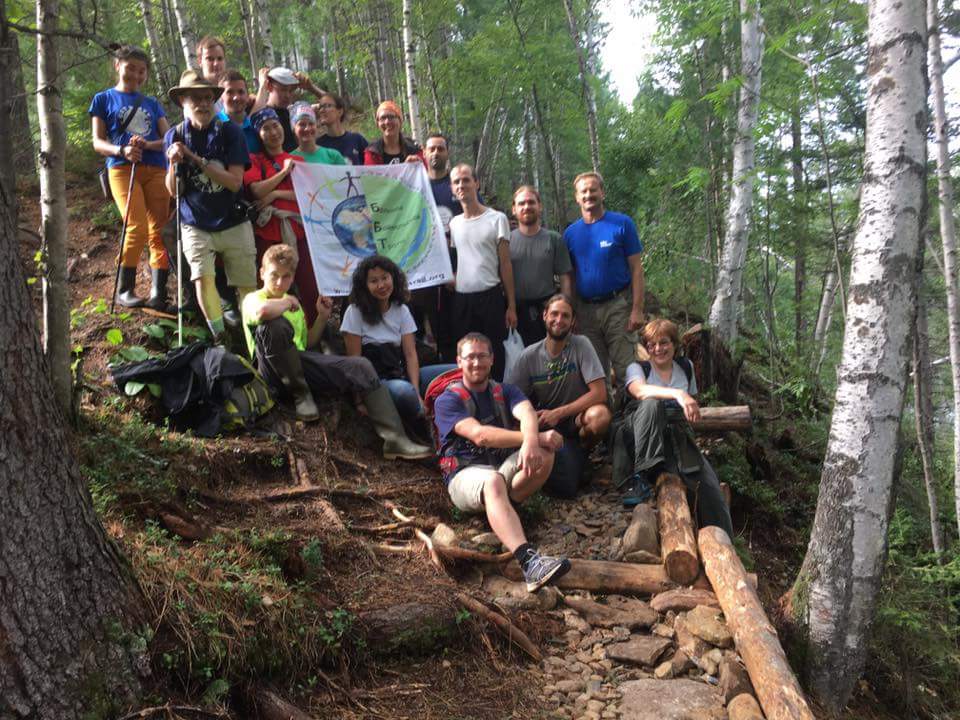
Our group on the last project day, on the trail that we built in the previous days
After we arrived, we had to carry all of our equipment to the camping site, some 2 km inside the nature reserve. Since any kind of machines or vehicles are only allowed in exceptional cases inside this reservation, we had to carry everything by ourselves to the campsite… Since we planned to stay for 2 weeks, that was food for 14 days for 15 people, all the necessary tools for working on the trail and building our camp, the tents, and of course our personal stuff. We had to walk several times from our “basecamp” at the entrance of the reserve and the actual campsite until we had brought all the stuff to the campsite. And we were still lucky that our campsite was only 2 km inside the reserve – a previous project the week before had worked in a more remote area, and for them it was not only 2 but 12 km to go from the reserve entrance… I don’t even want to imagine how they had to carry the equipment there.
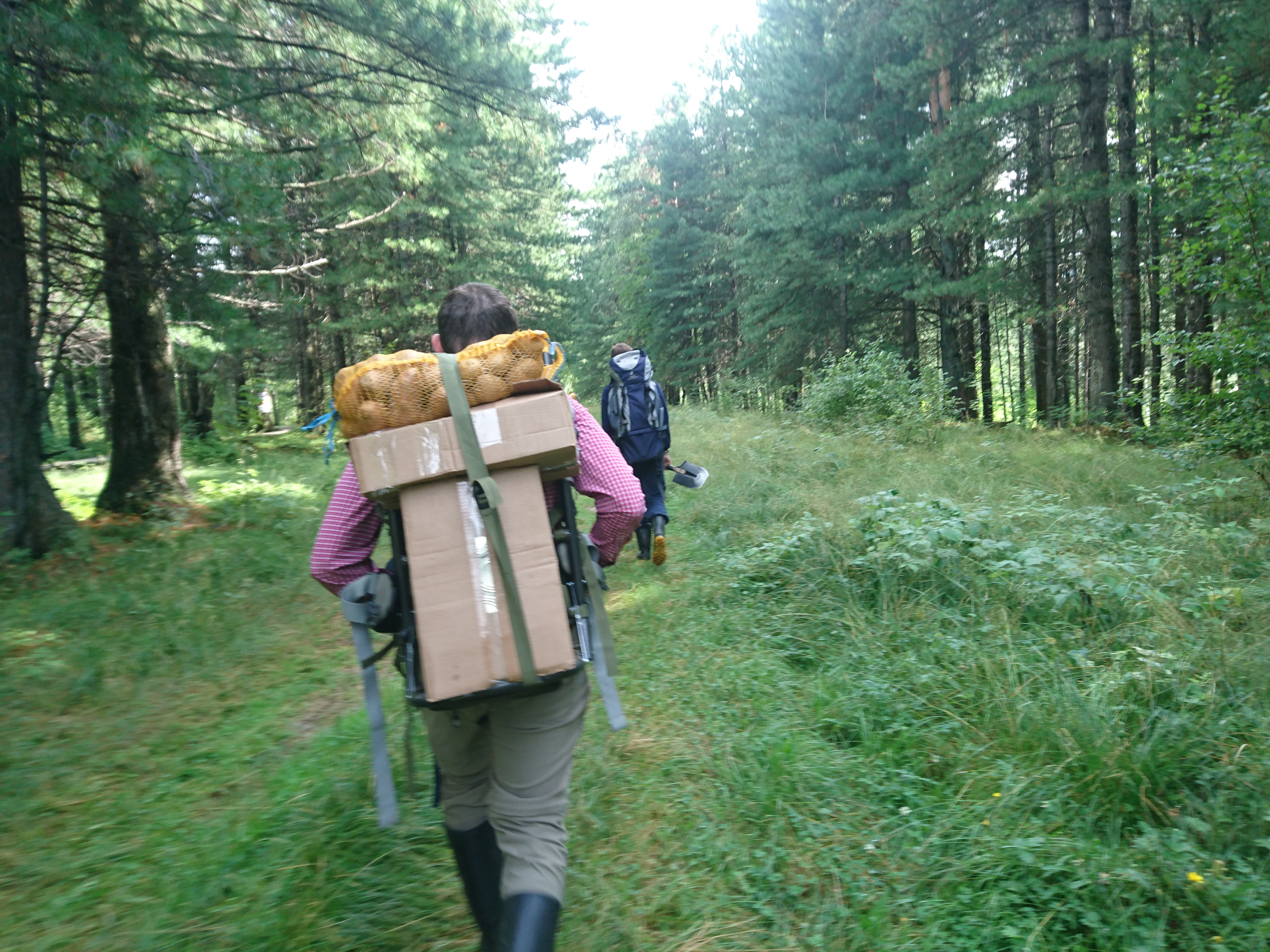
Actually, the plan was to build the tents on the first day directly after we had arrived, then go back to the entrance, sleep there in a hut for one night and bring the rest of the equipment on the following day and stay on the campsite from there on. On the first day we successfully put up the tents. However, on the second day we already got a taste of the difficult weather conditions – it rained all day, and we couldn’t go to the campsite on the morning to start working in the reserve. Instead, we had to stay in Tankhoi and help there with some other stuff. And so it came that instead of working on a hiking trail in a beautiful nature reservation, I spent my first working day on the village’s garbage dump, helping to carry away trash for several hours.
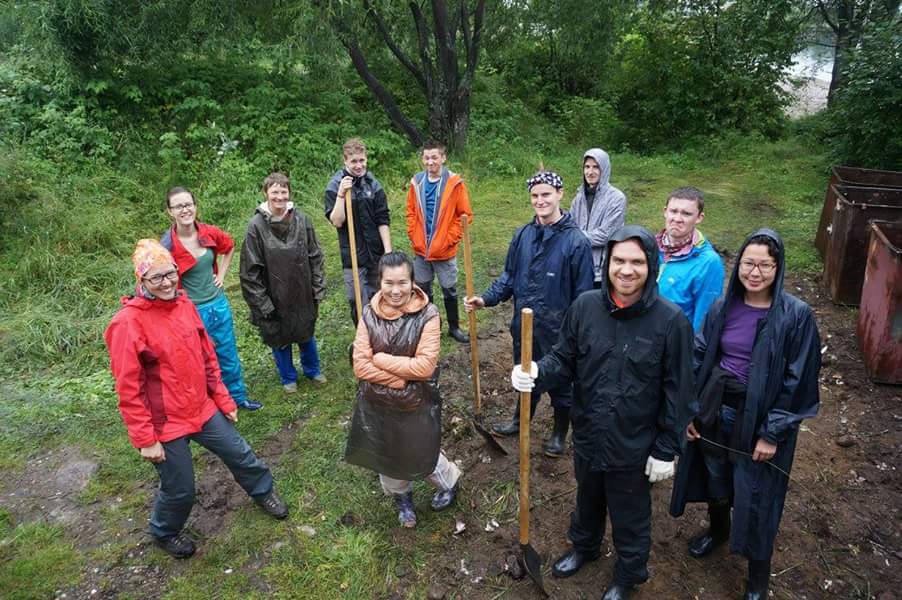
We might all be smiling on this picture, but trust me, I can confidently say that this was the most annoying work I have ever done in my life. There was any kind of different garbage, one more disgusting than the other. Used diapers, rotten eggs, and a lot more. Not a very nice way to start the project, but even this could not demotivate us. And luckily, in the evening the weather suddenly cleared up, and we were able to carry the remaining equipment to the camp site and arrive there just in time when it got dark, cook the first dinner over the campfire and look at what was probably the best starry sky I had seen until then in my life.
In the camp we were completely self sufficient for 2 weeks. It was divided into two parts: An area where we had a small shelter and a campfire that was our kitchen and dining area, and another area 50 m away where we had the tents. We actually had a toilet building there as well, altough it was very basic standard and a lot of spiders, bugs etc where living inside the toilet. We where told that after it got dark, we where not supposed to go to the toilet alone, but always have to take someone with us that stands guard, because there are bears living in the surrounding forest. Luckily we didn’t encounter any bears, but I heard that in one of the previous projects in this summer a bear had actually visited the camp twice, so these warnings are not without reason.
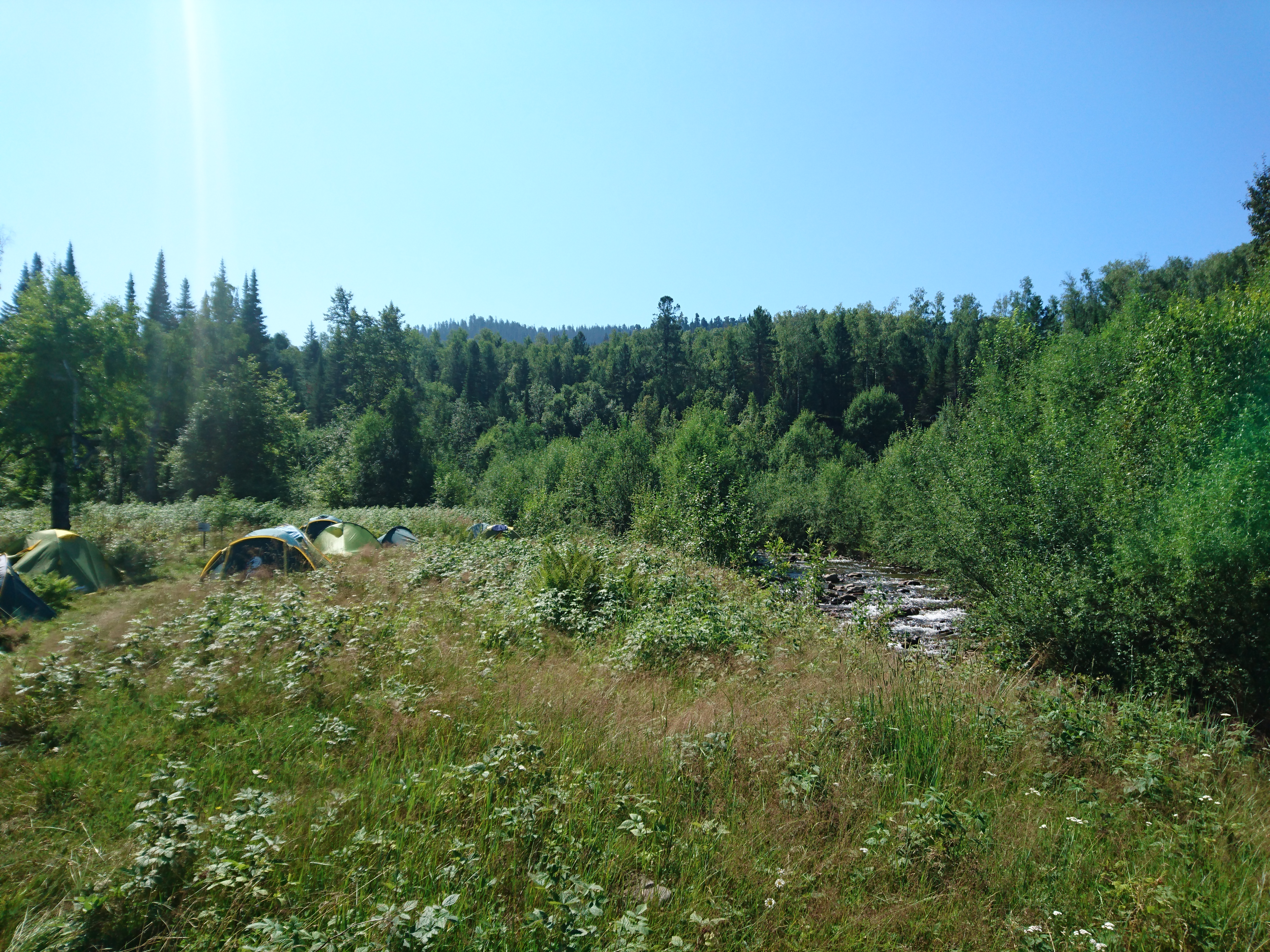
Our camping spot, still in nice weather
From that evening on, the plan was that we sleep in the camp, and most of the group would go to the working site in the morning, which was another 2 km inside the nature reserve. They would work on the trail until midday, go back to the camp for a long lunch break, and go back to the trail in the afternoon to work another couple of hours. Each day 2 volunteers were “on duty”, which means that they stayed in the camp all day and prepared the food for the whole group, washed the dishes afterwards and did any other kind of work that was necessary in the camp. Every volunteer would be on duty for 2 days during the project. The working day would end around 7 in the evening, after which we had free time.
However, the plan of working every day for several hours on the trail didn’t really work out from day 1 already, because the weather changed again the following day, and we had to stay in the camp because it rained a lot. We were able to do some work in the camp, but a lot of this day was just killing time… luckily, this time there was not garbage dump near that needed our work. On this day I also got some first-hand experience about russian bureaucracy, something I will tell a bit more about in a later post.
Some people started to tell horror stories then that the forecast said it would rain for several days. Fortunately this proved wrong, and on the next day we could actually go to the trail and start the work we all came for and that should have started 2 days ago already… that is, all of us could go instead of me and Kent. Because we had been elected to be on duty during that day, so instead of working on the trail, we had to stay in the camp and prepare breakfast, lunch and dinner plus doing quite a lot of other stuff. At that time, I started to doubt if I would ever be able to actually work on the trail.
Preparing meals in a single pot over a camp fire turned out to be pretty difficult, because after all the rain the firewood was very wet. But somehow we managed to feed all 15 people 3 times, and after all, the day was pretty nice because the weather was really sunny and warm that day. It was even possible to bath in the river.
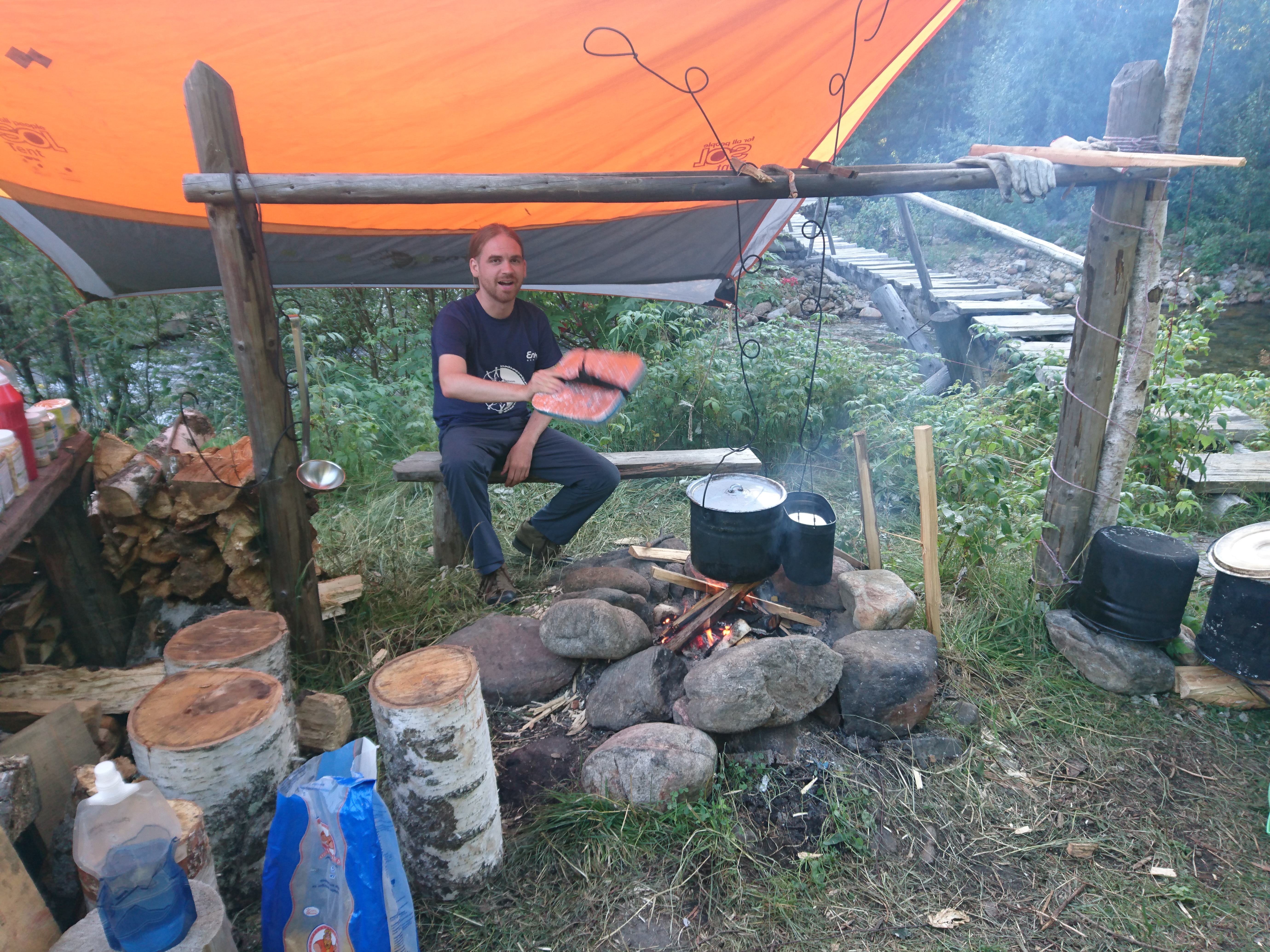
On duty, cooking in the camp’s kitchen area
The weather stayed nice for several days, so on the following day I was finally able to work on the trail. The work we did was a lot of fun, but quite tough. The whole day we did nothing but carrying big logs through the forest to the bridge, where they would later be used for construction of the new trail segment.
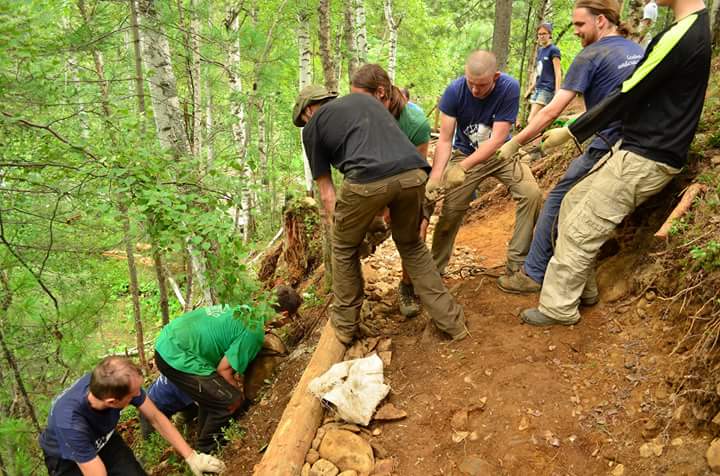
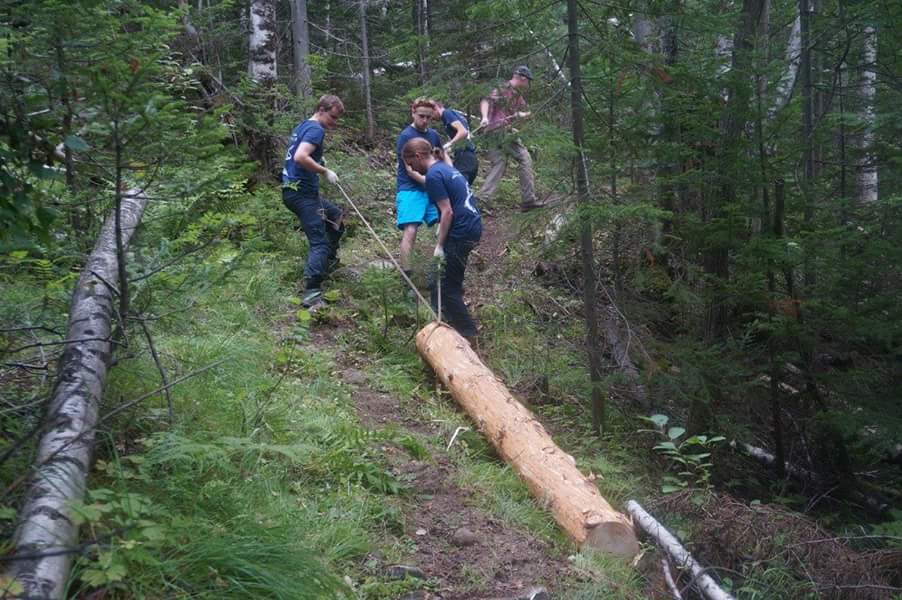

We were able to work for 4 full days, and since we were such a big group, we managed to complete almost all of the work that was planned for 2 weeks within these 4 days. And it turned out that we were really lucky to have worked so fast. On the 4th working day, people started to tell rumours that the weather would turn so bad we might have to abandon the camp. I couldn’t really believe this by then, cause at that time it was still really warm and sunny.
On the evening however it started to rain pretty heavily. The next morning we were informed that we did in fact have to leave the camp and move back to the cabins at the reserve entrance for at least one night. So we took our personal stuff and food for 3 days and walked back, but left the tents at the campsite cause we still hoped to be able to come back a few days later.
What happened then was probably the most extreme weather I have ever experienced. It was not stormy, and neither did it rain extremely heavily – the rain just didn’t stop anymore. I have seen some days in my life where it rained a lot, but I have never experienced that it just rains for a full 72 hours without stopping, not even a single second. We were able to sleep and sit in cabins, but whenever we left them, we were standing in and walking through the rain, and at some point everyones stuff was just completely wet, no matter how “rain-proof” it was supposed to be.
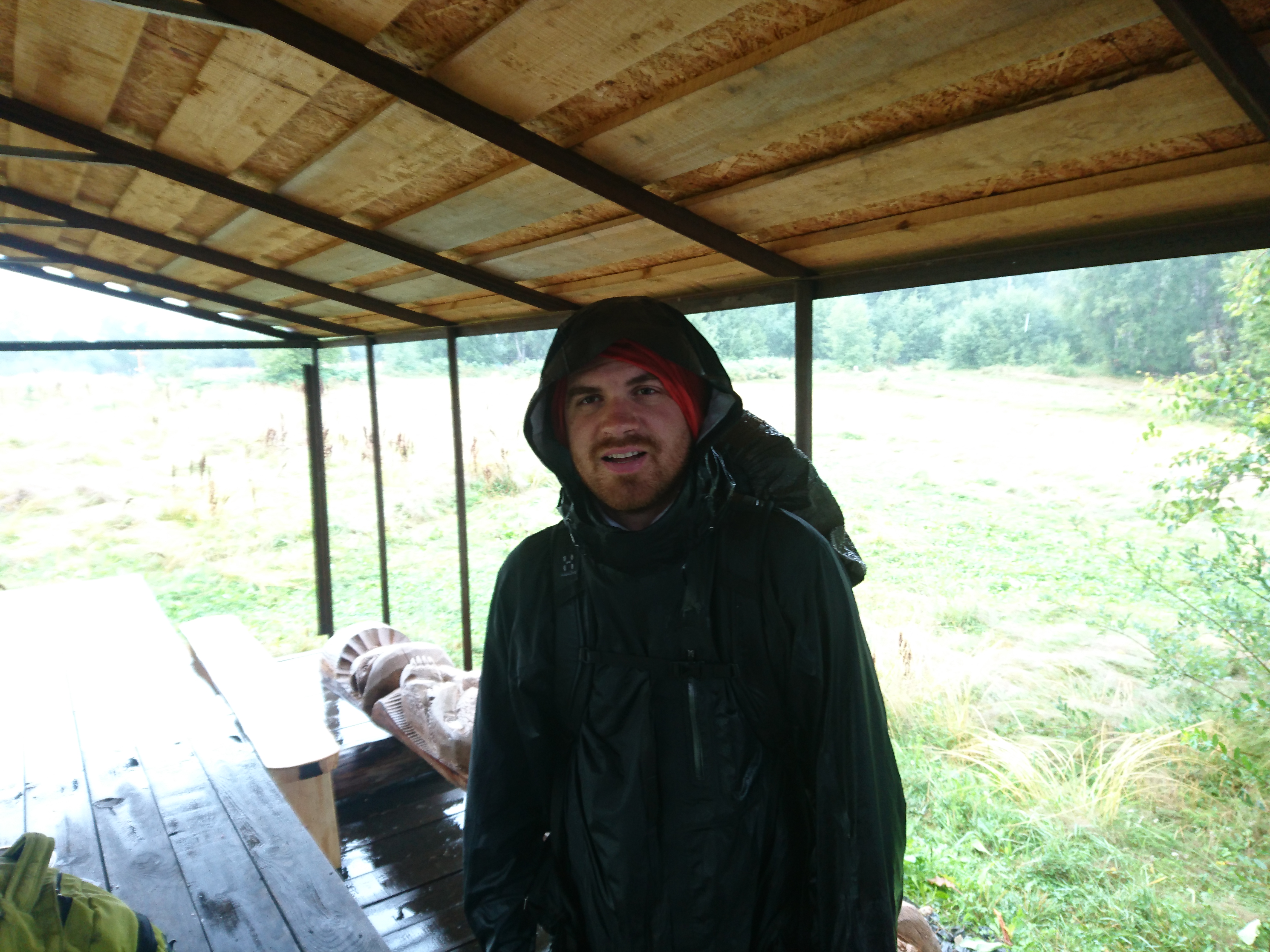
Nevertheless, I think our group dealt surprisingly well with these conditions. We could help the administration of lot of fun reserve wiwere me small tasks during those days, but mostly we had to kill time, so we sat around, read, pgot along with each otherthe fact that we still had a lot of fun and there were no problems between the people even in those difficult conditions shows how well the group got along with each other.
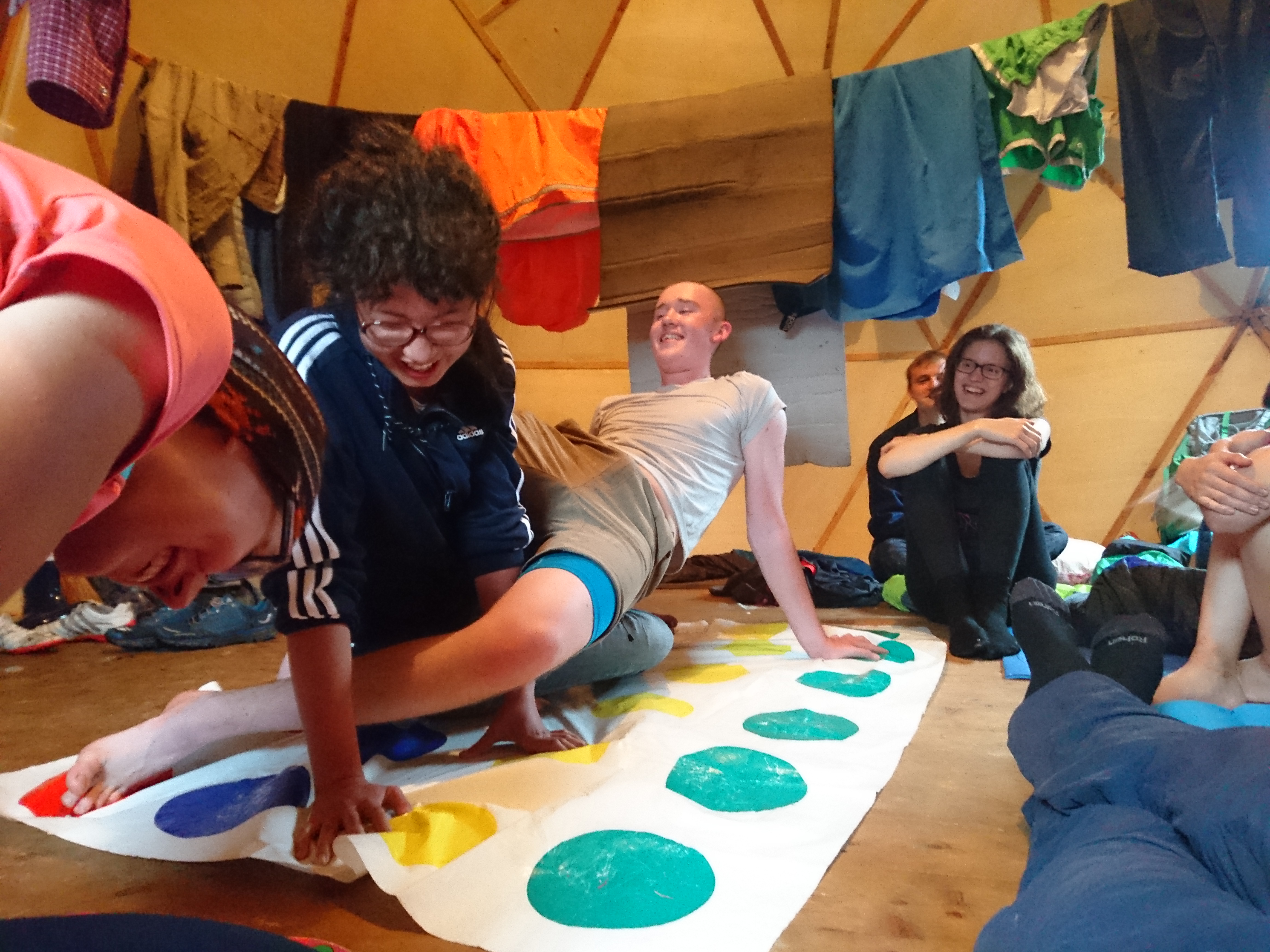
And after 3 days, it actually stopped raining. I got so used to the rain that it was really a weird feeling to leave the house and not having water coming from the sky. The weather stayed relatively nice for the remaining days, but by then it had already been decided that the work on the trail had almost finished and we would not move back to the campsite, so we stayed in the cabins for the remaining days and just went back to the campsite one more time to fetch the remaining stuff that we had left there, including the tents. After 3 days of rain, the path to the campsite had transformed into rivers and lakes at some places, and one more time I was extremely happy that I bought rubber boots before the project. The most impressive thing was the Osinovka river though – before the rain it had been a small river where you could easily go in and it barely reached your knees. After the rain, the river had risen and almost flooded the campsite, and going into the river would have been definitely very dangerous, as it was flowing really fast and carried a lot more water than before.
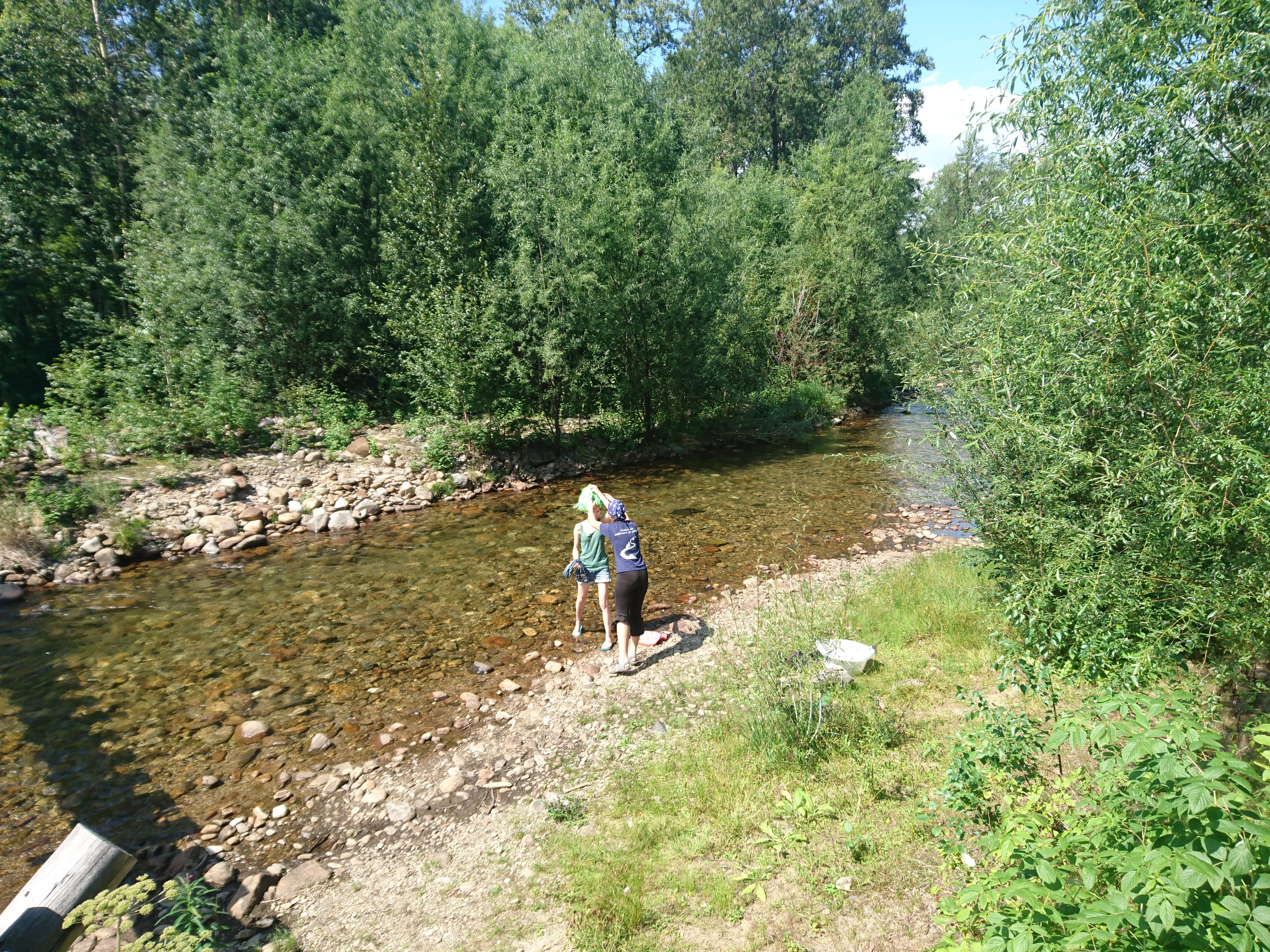
The river before…
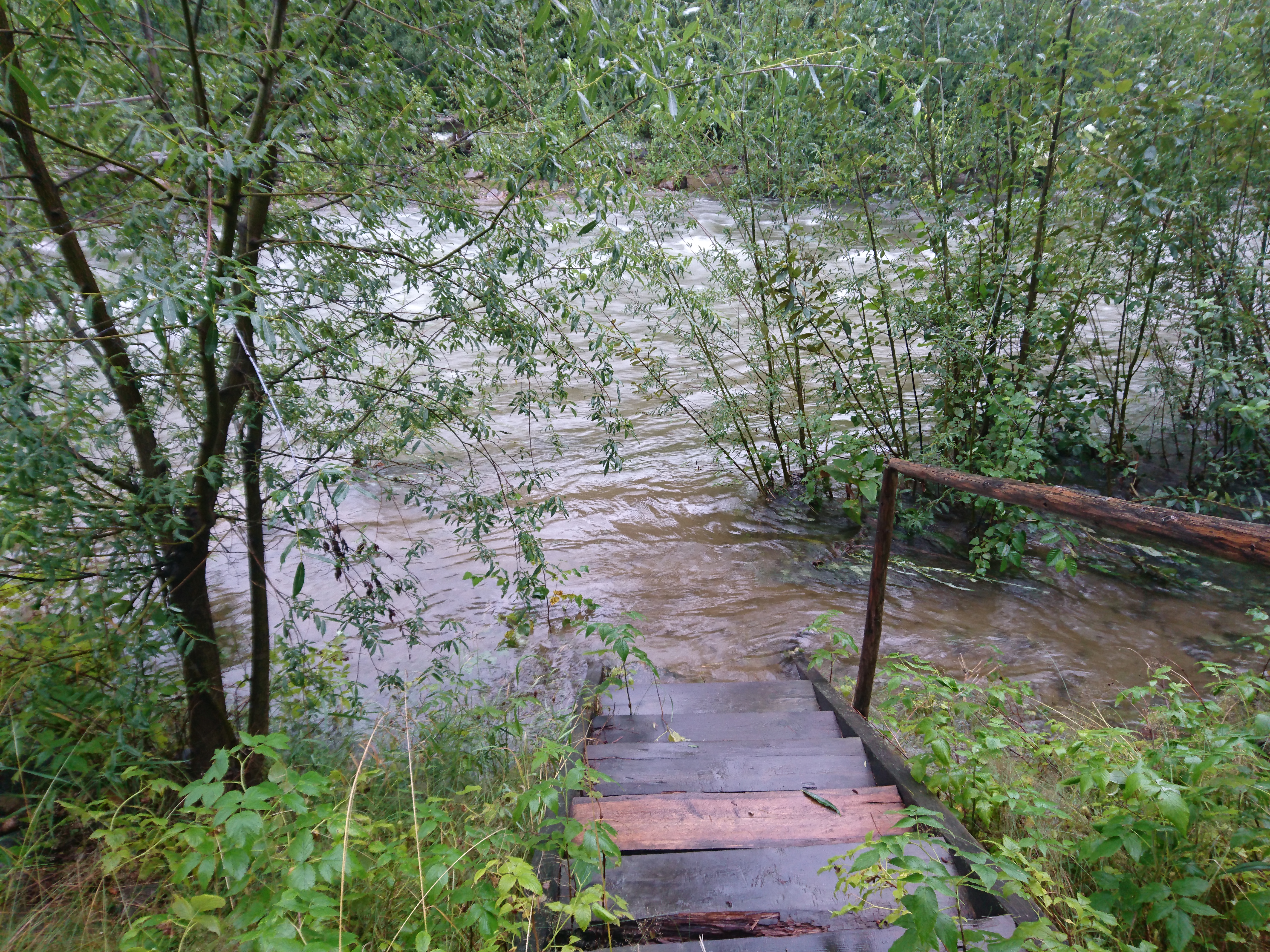
… and after the rain
On the last days we helped the reserve administration with some minor work, had another hike to a nice waterfall inside the reserve, and had kind of a ceremony at the end where the “bosses” of the reserve thanked us and even opened a bottle of champagne for us.

And then, the project was already finished… the whole group went back to Irkutsk to spend a last night together, and we went out to a bar in the city and could finally have some drinks together (there was a strict alcohol ban during the project).
When I look back at the project now, a couple of weeks later, I can only say that I am really grateful to got the chance to participate in this project and it was really one of the best things I have ever done in my life. I did a lot of work that felt really meaningful, in a place where you normally don’t have the chance to go to. The work and the area were only one part though, the most important part of such an event are always the people you get to know, and our group was really a perfect mix of different characters, and everyone could contribute something and learn something from the others.
And you can help as well!
The best thing about GBT: Everyone can help! The organisation relies on the work of volunteers, and really everyone is able to help if he or she is in relatively acceptable physical shape. The main activities of GBT are the summer projects where the trails are built, but there are also winter and educational projects where office work can be done or local children are tought about environmental issues. The GBT website provides a lot of information about the different projects and anything else regarding the organisation. So if you want to do something meaningful, work in a really, really nice environment, and meet a lot of cool new people, I can only recommend to not miss this opportunity.
Well done …and very interesting…
Hallo Daniel, hier ist Hans, der Vater von Steffen. Ich verfolge Deine Reise und schaue mir an wo Du bist. Hilfreich wäre bei Deinen Berichten, wenn Du ab und zu das aktuelle Datum mit reinschreiben könntest. On top der Webseite steht “Lake Baikal & Great Baikal Trail September 6, 2016” und dann datumsmäßig nichts mehr oder habe ich es überlesen ? Lass es Dir weiterhin gutgehen und pass auf Dich auf !!!
Viele Grüße von Hans